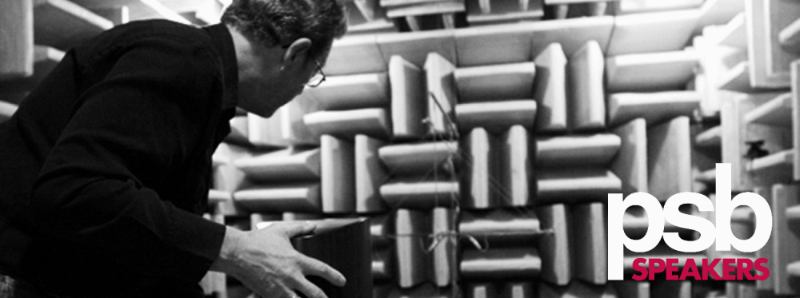PSB Speakers
Filters
Filter by Categories
Today, PSB is a well known and respected leader in the consumer electronics industry for audio, creating a broad range of high performance, high-value loudspeakers for music and home cinema applications.

PSB points to four attributes for their products: Performance, Appearance, Value, and Reliability. To deliver peak performance, PSB evaluates loudspeakers in an anechoic chamber, and refines them according to room measurements and listener preferences. Value is equally important. Appearance is also very important. Everyone has different tastes and PSB works hard to supply a broad range of sizes and applications (in-room, in-wall/in-ceiling, and in-cabinet styles) to appeal to everyone.
Reliability – it has to work. Along with performance, reliability is equally on the mind of the consumer purchasing audio equipment. With the endurance tests that we put our systems through on a daily basis, with high highs and deep lows, it’s got to withstand. PSB’s psychoacoustics research includes testing the critical interaction between loudspeaker, listener and room acoustics.
-432.png)
What Paul immediately recognised upon listening to Dr. Toole describe his research was that his findings gave him the formula he needed to design speakers that to the human sense of hearing, would be perceived as organic sounding.In other words, he could create speakers that wouldn’t fatigue a listener over long periods of listening because the listener would perceive those sounds in the same way they would the nature’s roaring thunder of Niagara Falls to all the subtleties of the soundscapes at the Algonquin Provincial Park.
In Dr. Toole, Paul found a lifelong friend and peer who would influence him and whom he influenced, all in the pursuit of a way to reproduce sounds that listeners would perceive as equivalent to that which was real, alive, and natural.

ALPHA AM3

ALPHA AM5

ALPHA iQ

M4U 8 MKII

ALPHA T20

ALPHA P5

ALPHA P3
.png)
IMAGINE T65

IMAGINE T54

IMAGINE B50

Passif 50

SYNCHRONY T800

SYNCHRONY T600

SYNCHRONY B600

SST-24

AST-25

ALPHA SUBWOOFER S8

ALPHA SUBWOOFER S10

M4U 9

M4U TWM

ALPHA C10

SUBSERIES BP8

SUBSERIES 250

